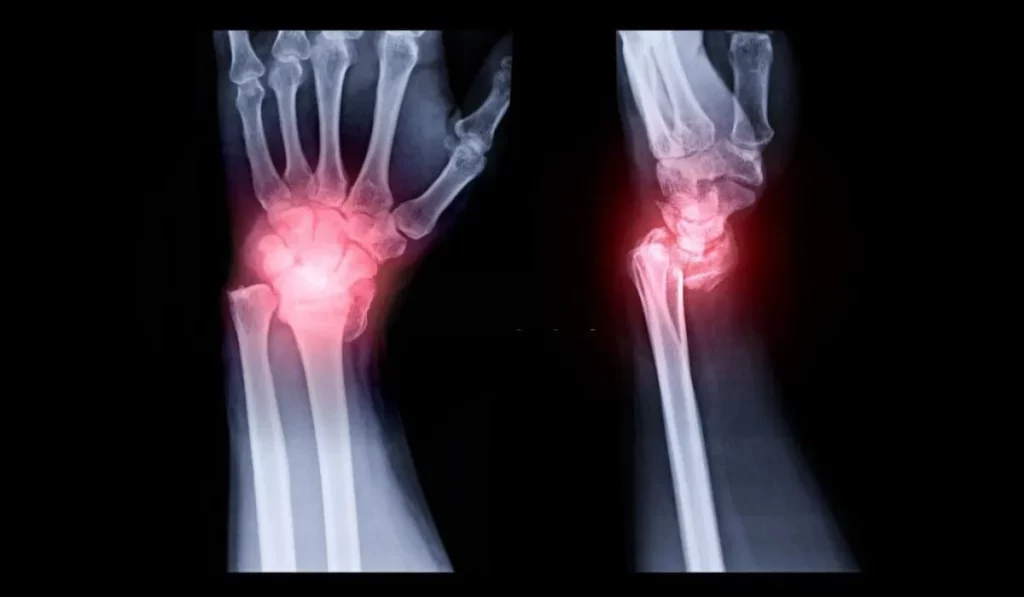The scaphoid is the name of a small bone in the wrist that looks like a bitchy boat. Although putatively minor, it’s largely involved in the movement and stability of the wrist. A scaphoid fracture is a constantly encountered wrist injury that frequently challenges surgical intervention. In this blog post, we will be discussing all you need to know about scaphoid fracture surgery, including types, suggestions, and recovery.
Understanding Scaphoid Fractures
Types Of Scaphoid Fractures
Scaphoid fractures are generally classified into two orders. Non-displaced fractures In these cases, the bone is cracked but still in alignment. Displaced fractures Then, the bone fractions are separated and may undergo realignment.

Causes
Scaphoid fractures frequently occur from a fall onto an outstretched hand or a direct impact on the wrist. Sports injuries and auto accidents are common lawbreakers.
Indications For Surgery
Not all scaphoid fractures necessitate surgery. The decision to operate depends on several factors:
Displacement: Displaced fractures typically necessitate surgery to achieve anatomic reduction.
Non-Union: A non-union is the result of a scaphoid fracture failing to heal appropriately. To promote bone healing, surgery may be necessary.
Delayed Presentation: If a scaphoid fracture is not diagnosed and treated conservatively, surgery may be required to prevent nonunion.
Surgical Approaches
You can do scaphoid fracture surgery in a bunch of different ways:
Open Reduction and Internal Fixation (ORIF): This is the most common surgical approach. It involves making an incision over the fracture site, realigning the bone fragments, and securing them with screws or wires.
Percutaneous Screw Fixation: Using this minimally invasive technique, screws are inserted across the fracture to hold it in place.
Bone Grafting: If non-union is present, bone grafts may be used to stimulate healing by providing additional bone material at the fracture site.
Recovery Process
Immobilization: After surgery, a cast or a splint is usually applied to immobilize the wrist. This helps to maintain the alignment of the bones as they heal.
Physical Therapy: Physical therapy is a crucial part of the recovery process. It helps regain wrist strength, flexibility, and range of motion. Rehabilitation exercises are tailored to each patient’s specific needs.
Follow-Up: Periodic postoperative visits with your surgeon are important to evaluate the progress of healing and address any modifications that might need to be made.
Return To Activities: Recovery times vary depending on the extent of the fracture and how well the surgery went. Recovery: It could take many months to get back to 100%.
Read More:- Dealing With Stress Fractures: Diagnosis And Recovery
Complications And Pitfalls
While scaphoid fracture surgery is generally safe and effective, there are implicit pitfalls and complications to be apprehensive of
Infection: Any surgical procedure carries a threat of infection. Proper crack care and antibiotics can help alleviate this threat.
Non-Union: In some cases, indeed with surgery, the scaphoid may not heal duly. This may bear fresh surgery or indispensable treatments.
Stiffness: Some cases may witness stiffness in the wrist, which can be addressed through physical remedies and exercises.
Read More:- Recovery Strategies For Athletes With Concussion: Expert Tips And Techniques
Conclusion
Surgery is a useful volition for individualities with displaced fractures, non-union, and delayed donation of scaphoid fractures. Early opinion and treatment are pivotal to help habitual complications and restore wrist function.
However, consult professional healthcare without detention to manage your symptoms rightly and bandy the voluntary surgery for a better recovery, If you suppose there’s a possibility of a scaphoid fracture.
FAQ
Q1:What Is A Scaphoid Fracture?
A scaphoid fracture is a break in the scaphoid bone located in the wrist. It can occur due to a fall on an outstretched hand or direct wrist impact.
Q2:When Is Scaphoid Fracture Surgery Necessary?
Surgery is typically necessary for displaced fractures (where the bone fragments are not aligned) and cases of non-union (when the fracture fails to heal properly). Delayed presentation may also require surgical intervention.
What Are The Surgical Approaches For Scaphoid Fractures?
The common surgical approaches include Open Reduction and Internal Fixation (ORIF), percutaneous screw fixation, and, in cases of non-union, bone grafting.
Q4: Is Surgery The Only Treatment Option For Scaphoid Fractures?
Surgery isn’t always the first treatment option. Casting and close monitoring can help treat non-displaced fractures. It’s still possible to have surgery later if the fracture doesn’t heal.
Q5: What’s The Recovery Process After Scaphoid Fracture Surgery?
Recovery involves immobilization with a cast or flake, followed by a physical remedy to recapture wrist strength and mobility. Regular follow-up movables are pivotal to covering progress.